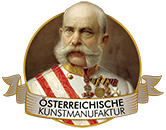

Arthur Augustus Dixon was born in England in 1872. He lived with his parents Richard and Rosa and his brothers Frederick Richard, Herbert Walter and Charles in St. Pancras, London. In his youth the family moved to the outskirts of the city, near Camden, where he attended an art school.
At just 24 years of age, he had already achieved a certain degree of fame as an artist. From 1897 onwards, his oil paintings, which can be attributed to Neo-Pre-Raphaelism, were exhibited at the Royal Academy of Art and the Royal Society of British Artists, among others. Later his works could be admired in galleries all over the country. It was probably around 1899 that he achieved his breakthrough as an illustrator of books. In those days it became fashionable to illustrate stories in abundance. Dixon's art was right on target. For many years, he worked for Ernest Nister, a native of Darmstadt who ran a publishing house in London. But Dixon also painted and drew for other renowned publishing houses, including Raphael Tuck & Sons, Blackie & Son, the Oxford University Press and Collins Verlag.
The stories for which Dixon created the pictures covered a wide range of themes. For Collins, he illustrated numerous classics of world literature: Victor Hugo's "The Hunchback of Notre Dame", Dumas' "The Count of Monte Cristo", Jane Austen's "Sense and Sensibility" and many well-known tales by Charles Dickens, such as "A Tale of Two Cities" and "Great Expectations". For Tuck & Sons he illustrated children's books with texts by Shakespeare, Longfellow and Tennyson. The latter dealt with English mythology, especially Arthurian mythology. Numerous painted scenes from the Bible, especially from the life of Jesus Christ, can be found in the publications of Blackie & Son and illustrate biblical parables, narrated by the Quaker Theodora Wilson Wilson.
Dixon's book illustrations are sometimes black and white, sometimes colorful and, for the often very young readership, painted in a child-friendly manner. His small works of art also appeal to adults, of course. Jesus Christ at Passover or healing a blind man, graceful princesses in iridescent robes, knights and mythical heroes in shining armour - Dixon knew how to depict transfigured sentimentality and romance without appearing overly sentimental or transfigured. His illustrations of many famous fairy tales, including fables and legends from Russia, Greece and the Orient, are also enchanting. He made his illustrations with pencil and watercolours and sometimes used the halftone effect to better represent the bright and dark light conditions.
Dixon was married to the artist and sculptor Cecil Elsie Sowerby. With her he had a daughter, also called Elsie, and a son, Arthur Cecil, named after him. The respected painter and illustrator, about whom so little is known despite his extensive work, died in 1959 in Berkhamsted, Hertfordshire, 4 years after the death of his wife.
Arthur Augustus Dixon was born in England in 1872. He lived with his parents Richard and Rosa and his brothers Frederick Richard, Herbert Walter and Charles in St. Pancras, London. In his youth the family moved to the outskirts of the city, near Camden, where he attended an art school.
At just 24 years of age, he had already achieved a certain degree of fame as an artist. From 1897 onwards, his oil paintings, which can be attributed to Neo-Pre-Raphaelism, were exhibited at the Royal Academy of Art and the Royal Society of British Artists, among others. Later his works could be admired in galleries all over the country. It was probably around 1899 that he achieved his breakthrough as an illustrator of books. In those days it became fashionable to illustrate stories in abundance. Dixon's art was right on target. For many years, he worked for Ernest Nister, a native of Darmstadt who ran a publishing house in London. But Dixon also painted and drew for other renowned publishing houses, including Raphael Tuck & Sons, Blackie & Son, the Oxford University Press and Collins Verlag.
The stories for which Dixon created the pictures covered a wide range of themes. For Collins, he illustrated numerous classics of world literature: Victor Hugo's "The Hunchback of Notre Dame", Dumas' "The Count of Monte Cristo", Jane Austen's "Sense and Sensibility" and many well-known tales by Charles Dickens, such as "A Tale of Two Cities" and "Great Expectations". For Tuck & Sons he illustrated children's books with texts by Shakespeare, Longfellow and Tennyson. The latter dealt with English mythology, especially Arthurian mythology. Numerous painted scenes from the Bible, especially from the life of Jesus Christ, can be found in the publications of Blackie & Son and illustrate biblical parables, narrated by the Quaker Theodora Wilson Wilson.
Dixon's book illustrations are sometimes black and white, sometimes colorful and, for the often very young readership, painted in a child-friendly manner. His small works of art also appeal to adults, of course. Jesus Christ at Passover or healing a blind man, graceful princesses in iridescent robes, knights and mythical heroes in shining armour - Dixon knew how to depict transfigured sentimentality and romance without appearing overly sentimental or transfigured. His illustrations of many famous fairy tales, including fables and legends from Russia, Greece and the Orient, are also enchanting. He made his illustrations with pencil and watercolours and sometimes used the halftone effect to better represent the bright and dark light conditions.
Dixon was married to the artist and sculptor Cecil Elsie Sowerby. With her he had a daughter, also called Elsie, and a son, Arthur Cecil, named after him. The respected painter and illustrator, about whom so little is known despite his extensive work, died in 1959 in Berkhamsted, Hertfordshire, 4 years after the death of his wife.
Page 1 / 0










